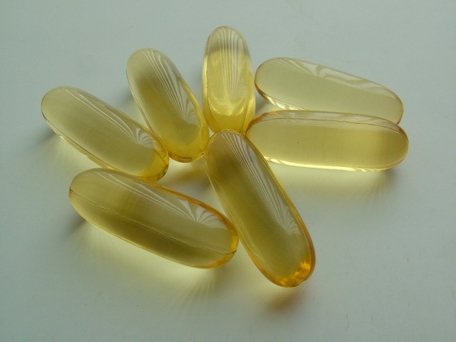 A recent clinical research led by Hyo-Soo Kim from the Division of Cardiology in the Department of Internal Medicine at Seoul National University Hospital suggests that combining statins with omega-3 fatty acids may be more effective at managing raised blood lipid levels than statins alone.
A recent clinical research led by Hyo-Soo Kim from the Division of Cardiology in the Department of Internal Medicine at Seoul National University Hospital suggests that combining statins with omega-3 fatty acids may be more effective at managing raised blood lipid levels than statins alone. Sixty-two people with high triglyceride levels and total cholesterol levels participated in the six week prospective, randomized, open-label study.
Both groups received a daily poll containing 20mg of simvastatin, while half of the participants also received an addition 4 grams of omega-3 per day*.
After six weeks the group receiving simvastatin only achieved a 13.9 percent reduction. The group receiving the combination simvastatin and Omega-3 was able to reduce blood levels of triglycerides by a significant 41.0 percent without adverse reactions.
The study appears to support the already extensive data linking omega-3 intakes and improved measures of cardiovascular health. The heart health benefits of consuming oily fish, and the omega-3 fatty acids they contain was first reported in the early 1970s by Dr Jorn Dyerberg and his co-workers in The Lancet and The American Journal of Clinical Nutrition. To date, omega-3 fatty acids have been linked to improvements in blood lipid levels, a reduced tendency of thrombosis, blood pressure and heart rate improvements, and improved vascular function.
Beyond heart health, omega-3 fatty acids, most notably EPA (eicosapentaenoic acid) and DHA (docosahexaenoic acid), have been linked to a wide-range of health benefits, including reduced risk of certain cancers, good development of a baby during pregnancy, joint health, and improved behaviour and mood.
The combination of omega-3 fatty acids plus simvastatin should be considered as an optimal treatment option for patients with mixed dyslipidemia.
Journal Reference S-H. Kim, M-K. Kim, H-Y. Lee, H-J. Kang, Y-J. Kim, H-S. Kim. Prospective randomized comparison between omega-3 fatty acid supplements plus simvastatin versus simvastatin alone in Korean patients with mixed dyslipidemia: lipoprotein profiles and heart rate variability. European Journal of Clinical Nutrition, (29 September 2010) | doi:10.1038/ejcn.2010.195
Lovaza is used in this study. Each 1-gram capsule of Lovaza contains at least 900 mg of the ethyl esters of omega-3 fatty acids sourced from fish oils. These are predominantly a combination of ethyl esters of eicosapentaenoic acid (EPA - approximately 465 mg) and docosahexaenoic acid (DHA - approximately 375 mg).
Lovaza is not available in Malaysia. The available Pristin Omega-3 contains per capsule EPA 396 mg and DHA 264 mg; a daily dose of 5 capsules will provide the equivalent dose of EPA and DHA used in the study.


No comments:
Post a Comment